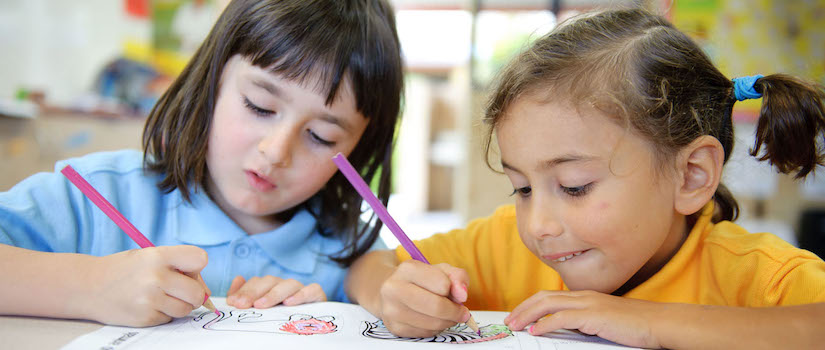Articles & Videos
Investigating Investigations
Categories
Subscribe to our newsletters
Receive teaching resources and tips, exclusive special offers, useful product information and more!
Investigating Investigations
iMaths 13/6/12

Note: iMaths is in its final year and will be discontinued at the end of 2024. If you’re looking for a primary maths resource written for the Australian Curriculum Version 9.0, explore Maths Trek.
Whether you’re a first timer or an old hat at teaching an investigation-based approach to numeracy, there are a few simple strategies you can use to help students get the most out of maths. The following strategies use Year 3 iMaths Investigation ‘How do I measure up?’ as an example, but are equally applicable to all iMaths Investigations.
Peer Questioning
Teachers all know questioning is important, however finding time to do this effectively can be a challenge. A great solution is to teach your students how to question each other.
Start by getting students to repeat a whole-class question to a nearby classmate or ‘shoulder buddy’. For example, in Step 3 of the Investigation, shoulder buddies could ask each other “what will be the best tools for measuring?” then, “why do you think this?”. While students are justifying their answers to each other, pick one student to summarise and share their discussion with the whole class, they can even include ideas they overheard from other discussions.
Peer questioning is an ideal strategy to use to help students complete the Investigation Plan and to develop word meaning comprehension in the ‘Read and plan’ section of the Investigation.
By using peer questioning, every student is encouraged to share their ideas, and interactions are reciprocal and substantive. Further down the track this will lead to self-questioning, an important skill for estimating, checking work and problem solving.
Answering two ways
Answering a question in two different ways demonstrates a deeper understanding than answering two questions the same way. If a problem or concept is only applied or described in one way it may not be genuinely understood. To overcome this, ask students to solve, present or explain their thinking in two different ways.
For example, if a student says “my little finger is twice as long as my little toe”, ask them how else they could explain this. Answers may include:
- My little toe is half the length of my little finger.
- If I put my two little toes together it would be the same as my little finger.
- If I chopped my finger into two equal pieces they would be the same length as my little toe.
Allowing Time
Don’t be afraid to add extra time when students struggle with a Topic or need some extra revision. If an Investigation is taking longer than expected, let it continue into the next week. Remember, you are not expected to fit all 12 iMaths Investigations into one year.
When in a rush, it can be tempting to leave out the ‘Read and plan’ and ‘Communicating and reflecting’ sections of the Investigation, however these are some of the most important aspects of the Investigation. These sections allow students to develop and demonstrate their maths understanding. After all, we don’t just want our students to DO maths, we want them to UNDERSTAND maths.
Be smart with your time allocation and integration. Students displaying and describing their work to the class fits nicely into the ‘Interacting with others – Literacy sub strand’ (Australian Curriculum descriptions ACELY1675, ACELY1676, ACELY1792) so by doing this you may also have covered your speaking and listening outcomes for the week!
Challenging your students and making them challenge you
Few students would ever disagree with a teacher and most teachers wouldn’t make mistakes easy enough for students to pick up. However intentional ‘mistakes’ can really keep students on their toes.
For example, in Step 4, you could create a graph to show your arm is 100 m long and that your hand is longer than your leg. Once students are aware the teacher is making the occasional ‘mistake’ they will try and catch you out. It will encourage them to think critically about your work and their own.
To encourage students to really think about their work they need to be challenged. Occasionally challenging correct answers will make students justify their reasoning as well as build resilience for when they do make mistakes.
Thinking about thinking
One of the hardest things to teach is how to think, but as an expert you are a great model for your students. Give a full dialogue of your thoughts to show students how an expert thinks, and get them justifying their own decisions to themselves and to others. For example, when taking measurements in Step 3 of ‘How do I measure up?’ students may verbalise some of the following processes:
- I’ll take off my shoe because I’m measuring my foot not my shoe.
- To measure my foot I think I’ll use a ruler because it won’t bunch up when I tread on it like a tape measure could.
- My heel is at 0 and my big toe is between the numbers 24 and 25 so I will write down 24 ½.
- ‘24 ½’ can’t be in metres as my foot isn’t bigger than teacher’s metre ruler and I know a millimetre is a really small unit so it must be 24 ½ centimetres.
Last, but by no means least, don’t forget to HAVE FUN!